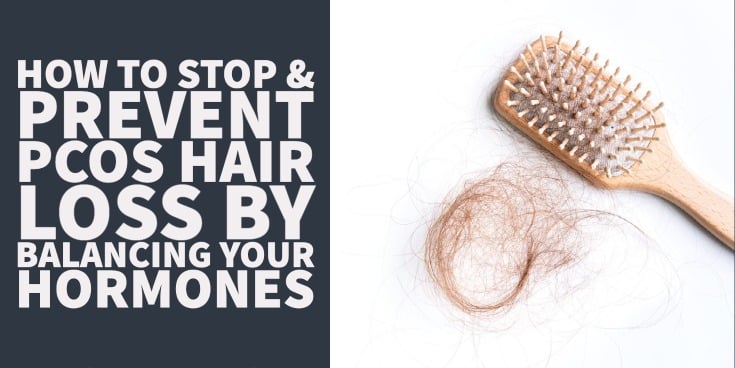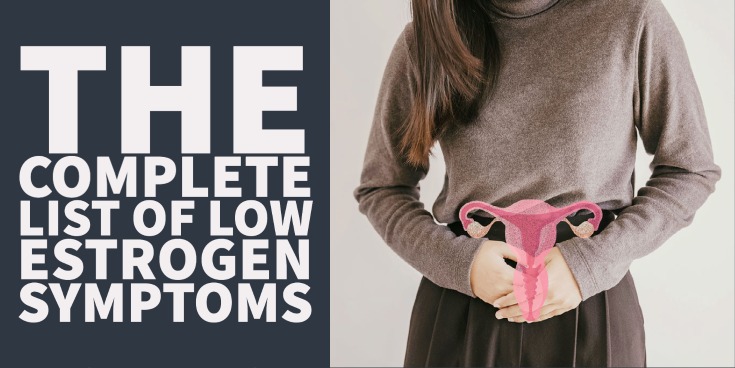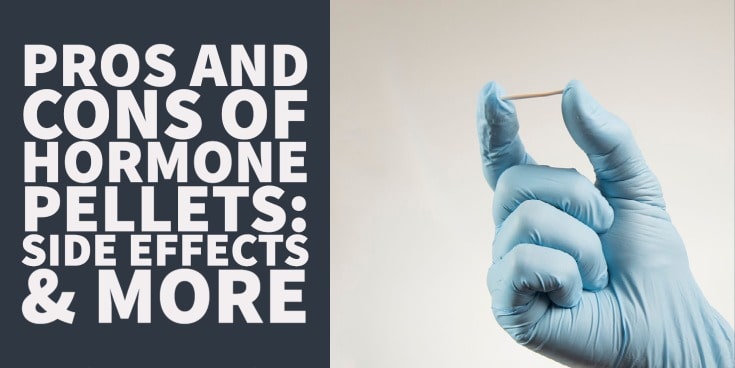What is considered a “normal estrogen level”?
Did you know that weight gain can alter your estrogen levels?
Or that having low progesterone may mimic the symptoms of high estrogen?
Estrogen is an important hormone that fluctuates based on the day of the month and the age of the patient.
Learn more about what constitutes normal estrogen levels in this guide including how to determine if your levels are normal and what to do about it:
More About Estrogen (The Basics)
Estrogen is a class of hormones that are very important to both men and women.
It turns out that there really isn’t a hormone in the body called “estrogen”, instead estrogen is used to refer to a series of hormones that act on estrogen receptors.
Confused?
Don’t be, it’s actually quite simple:
Certain hormones have the ability to sit on and activate estrogen receptors in the body which turn on genetic function (1).
There are actually many different types of hormones that fit into this category but the 3 strongest seem to be estradiol, estrone, and estriol (2).
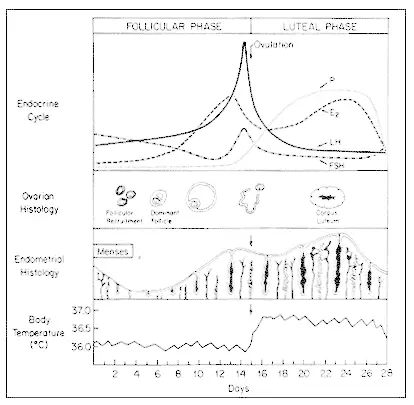
Estradiol is the most potent of this group (3).
These estrogens are then cut up and metabolized into smaller fragments by the liver and each of these fragments also has an impact on estrogen receptors in the body.
So when we talk about “estrogen levels” we are usually referring to the level of the most potent estrogen, estradiol.
But just realize that there are MANY other “estrogens” floating around in your body that are not being tested and which may have an impact on your body.
It doesn’t stop there, though, because estrogen is also a hormone that fluctuates month to month and over time!
For this reason, it can make testing for estrogen quite complex.
The good news?
We do have ways to assess estrogen in your body, but often these values should be used in context with your symptoms to help complete the picture.
Estrogen Levels Vary on a Daily, Monthly, and Yearly Basis
It is well known that estrogen levels vary based on the month (4) (estradiol goes up and down based on the female menstrual cycle) and based on your age (5) (menopause results in very low estradiol levels).
This variation NEEDS to be taken into account when testing estrogen.
If you go into your doctor’s office and your doctor orders an estrogen on just some random day, it’s almost impossible to make any sort of claim based on that single lab test about your estrogen level.
The only exception is probably menopause because at this time in your life your estrogen is no longer fluctuating on a monthly basis and will stay relatively stable.
Because it is known that estrogen varies based on the day of the month (assuming a normal menstrual cycle) lab tests come equipped with “ranges” which are designed to help with interpretation.
The problem with these lab tests (as pointed out below) is that the reference range is very wide (6):
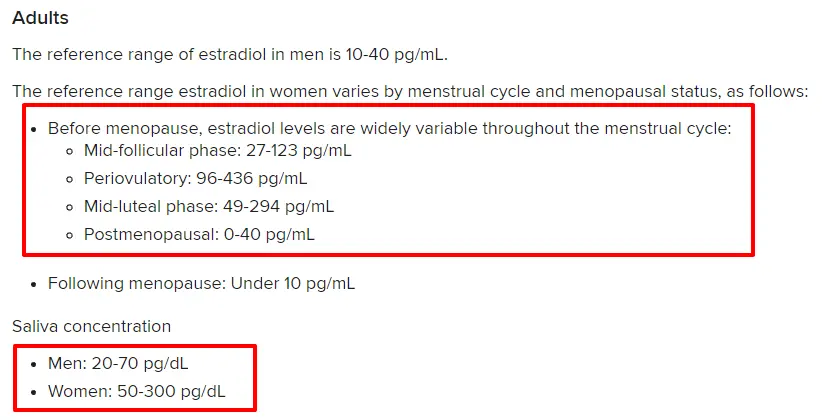
You can see from this example that mid-follicular phase estrogen may vary from 27 to 123.
Mid-luteal phase estrogen can vary from 49 to 294.
So why is this a problem?
Let’s say that you are suffering from some symptoms, such as menstrual irregularities, which lead you to the doctor for testing.
If your Doctor tests your estrogen and you come back in the normal range for the mid-luteal phase estrogen with a value of 58 you may be considered “normal”.
But what if the true “normal” for you is closer to 200? There would be no way to know what is actually your normal unless you have a baseline testing of estrogen (which is unlikely).
This is just one way in which testing for estrogen is not as straightforward as it might seem.
And this isn’t the only problem:
What if you don’t have a normal cycle?
If you are suffering from PCOS (7), infertility, or some other condition that may cause variation in the normal typical cycle then this must be taken into account when testing for estrogen.
What if you are on birth control medication?
If you are taking oral contraception, for whatever reason, then estradiol testing becomes less reliable.
What if you are taking an estrogen-blocking medication?
Some women may be taking medications or supplements which interfere with estrogen activity.
Medications such as anastrozole (9), supplements such as Indole-3-carbinol (10), and even birth control medication can all interfere with normal estrogen balance in your body thus making testing less reliable.
All of these factors will influence estradiol (and thus estrogen) levels in your body and may cloud the picture.
So how do you peer through the noise to figure out what is actually wrong?
The best way to assess estrogen is in combination with progesterone, the other vital sex hormone.
Estrogen and progesterone balance is critical to maintaining normalcy among women.
So instead of looking at the absolute value of estrogen (estradiol), it makes more sense to look at estrogen relative to progesterone.
Another important point is to always check estrogen and progesterone at the same time of the month and always check them together.
Using these two strategies will help bring meaning to your lab tests and help you understand if your estrogen is too high or too low for your body.
Bottom Line: Check your estradiol levels during the mid-luteal phase of your cycle (days 19-21) and ALWAYS check estrogen in combination with progesterone. This will give you the most information compared to randomly assessing estradiol by itself.
Your Symptoms may be the Key
So how are you supposed to navigate this complex problem of estrogen testing?
The key may be in your symptoms.
The evaluation of your estrogen should always be in the setting of whatever symptoms you are experiencing.
You are the single best way to determine if your levels are normal or abnormal.
For instance:
If you KNOW that your cycle has been stable and normal for the last 5 years but suddenly it’s off by 1 week, there is definitely something wrong.
If you have previously not had any issues but you are now suffering from breast tenderness, migraines, or mood issues related to your cycle, there is a high probability that something is wrong.
It’s often the case that your estrogen levels may show up “normal” even in the face of these types of symptoms.
For this reason, you should always pair up how you are feeling clinically with what your labs show.
I’ve provided a list of symptoms that tend to be associated with high and low estrogen below:
Symptoms of Low Estrogen
Low estrogen is relatively unusual among young menstruating women (for reasons outlined below) and thus tends to be more common as women age.
The principal cause of low estrogen is menopause which tends to occur in the fifth decade of life.
Other conditions, such as the removal of ovaries or the use of anastrozole, can trigger menopausal-like symptoms in women and lead to symptoms of low estrogen as well.
In general, if you are younger and menstruating (less than 50) it’s more likely that you are going to suffer from the symptoms of high estrogen, whereas women who are older tend to suffer from the symptoms of low estrogen (11).
You can find a list of low estrogen symptoms below:
- Hot flashes
- Weight gain (minor, usually 5-10 pounds)
- Mood swings
- Absent or scant menstrual flow
- Depression
- Changes to skin quality and texture (more sagging, wrinkling, and not as “bright”)
- Painful intercourse
- Reduction in sex drive (libido)
- Insomnia
- Changes in bone density
Low estrogen is generally easier to diagnose and spot via lab testing than high estrogen, but if you are experiencing any of these symptoms AND you have low (even low-normal) estradiol levels in the serum then you are likely experiencing low estrogen.
Low estrogen can be treated with bio-identical hormone replacement therapy (if indicated) or it can be managed with some supplements which can help reduce your symptoms.
You can read more about supplements designed to help manage low estrogen here.
Symptoms of High Estrogen
It’s much more common for younger women to suffer from the symptoms of high estrogen rather than the symptoms of low estrogen.
The reason for this has to do with the fact that many common medical conditions may either directly or indirectly lead to high estrogen.
Weight gain (12), insulin resistance (13), thyroid disease (14), and PCOS all tend to cause changes in the body which result in higher-than-normal estrogen (estradiol).
These conditions, coupled with the fact that low progesterone can also cause high estrogen symptoms, may explain why this particular condition is much more common in menstruating women.
Symptoms associated with high estrogen include:
- Weight gain in the hips/thighs/arms/glut regions (more than low estrogen)
- Breast tenderness & Enlarged breast glandular tissue
- Heavy menstrual flow
- Irritability
- Headaches & Migraines
- Hair loss
- Decreased libido (low sex drive)
- Bloating
- Altered bowel movements
The difficulty in diagnosing high estrogen is that this condition can occur even in the face of “normal” estradiol levels.
Conditions such as low progesterone, with normal estradiol, can result in the symptoms associated with high estrogen.
If you are suffering from these symptoms, even if your labs are normal to high-normal, then there is a high probability you are experiencing high estrogen.
You can learn more about this condition, including what causes it and how to treat it here.
Testing your Estrogen
If you are experiencing the symptoms of high or low estrogen then there’s a high probability that you have an estrogen balance issue.
But how do you go about testing for it?
This is where lab tests step in.
Lab testing can be helpful, but in order for you to be able to get actionable information from your lab testing, you have to follow a couple of rules.
The first is to always order estradiol in combination with progesterone.
Because these two hormones perfectly antagonize one another, it’s important to look at them both at the same time.
And because each woman has her own “normal” it’s best to consider ratios rather than absolute numbers.
Absolute numbers (either high or low) tend to have value when they fall outside of the reference range provided by the lab company, but you will find that most women who suffer from symptoms often have “normal” lab tests.
This is where the ratio of progesterone: estradiol comes in handy.
As a general rule, look for a ratio of 10:1 of estrogen: progesterone.
So if your estradiol is 100, you’ll want your progesterone to be somewhere around 10.
If your estradiol is 50, you’ll want your progesterone to be around 5, and so on.
The second rule is only test your estradiol: progesterone ratio during the mid-luteal phase of your cycle.
This ratio of 10:1 only holds true during the mid-luteal phase of the menstrual cycle (days 19-21).
If you get your labs drawn at any other time then this ratio won’t help guide you.
Below you will find a list of tests that you should get for both men and women:
For women:
- Serum Estradiol – Draw on days 19-21 of your cycle
- Serum Progesterone – Draw on days 19-21 of your cycle
- Sex hormone binding globulin – You can learn more about the importance of SHBG in this post.
If there are continued issues (or the picture still isn’t clear) then you would want to evaluate other estrogen metabolites with urinary tests to see how well your body is handling estrogen.
There are ways to improve estrogen metabolism with the use of certain supplements (such as B Vitamins and Indole-3-carbinol).
For men:
- Ultrasensitive Estradiol – The normal estradiol assay is not sensitive enough for men who tend to have much smaller amounts of estradiol when compared to women.
- Sex hormone binding globulin – SHBG is critical for evaluating both estradiol and testosterone in men (much like women).
- Free & Total Testosterone – High estradiol can reduce the overall effectiveness of testosterone in men so both should be tested together.
Final Thoughts
Remember that assessing estrogen can be tricky if not coupled with symptoms and if not evaluated at the right time of the month.
Estrogen is really a broad term that is used to describe an array of hormones that activate estrogen receptors in your cells, the most potent of which is estradiol.
For many people, assessing estradiol may be sufficient to help you determine if your estrogen is low or high.
In more confusing cases, you may need to order other estrogen metabolites via urinary testing.
Once you have determined if your estrogen is high or low you can then start to target your treatment.
Now I want to hear from you:
Are you suffering from the symptoms of high or low estrogen?
Are your lab tests confusing? Or have they been helpful?
Have you been able to treat the problem?
Leave your comments below!




